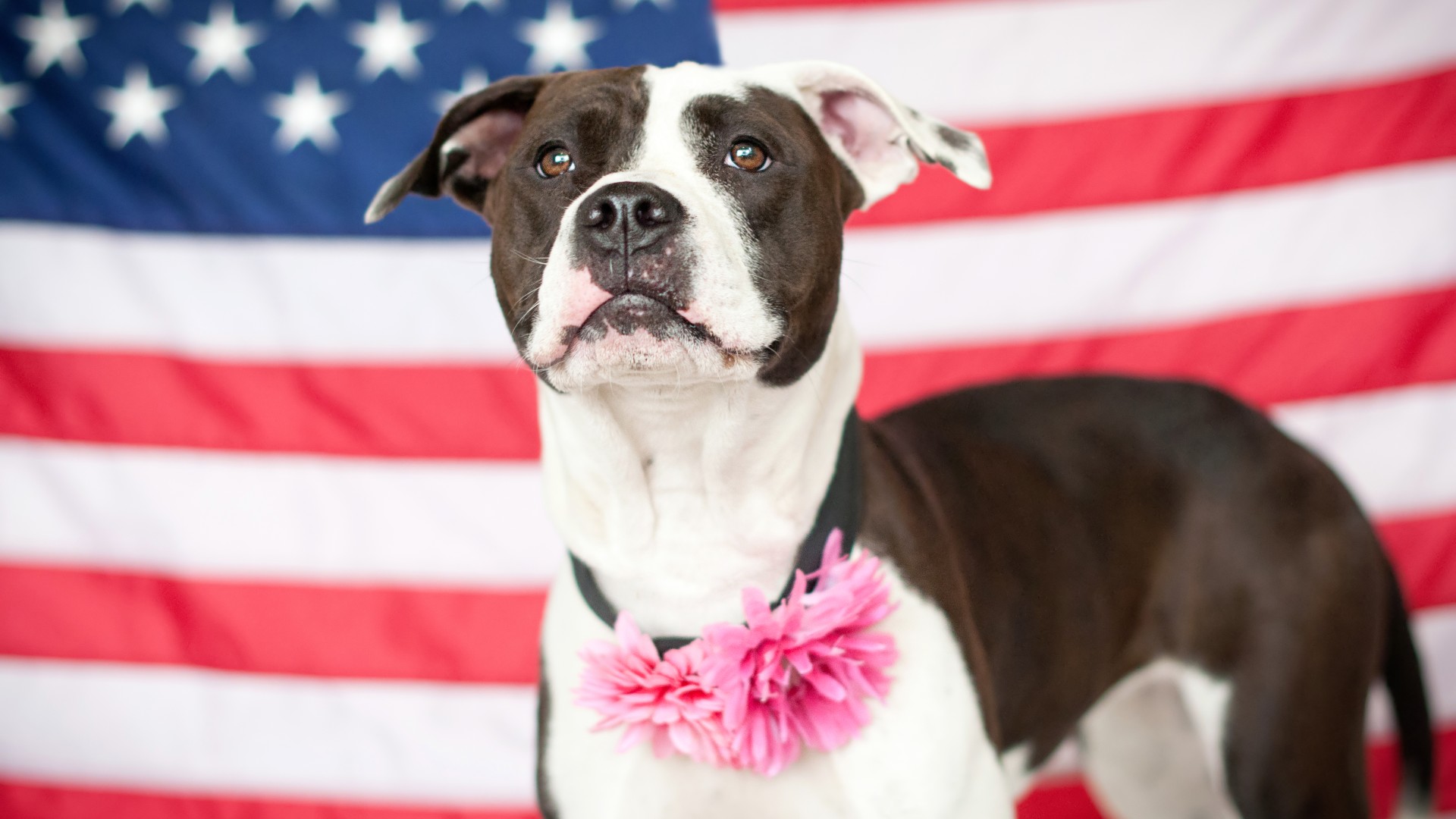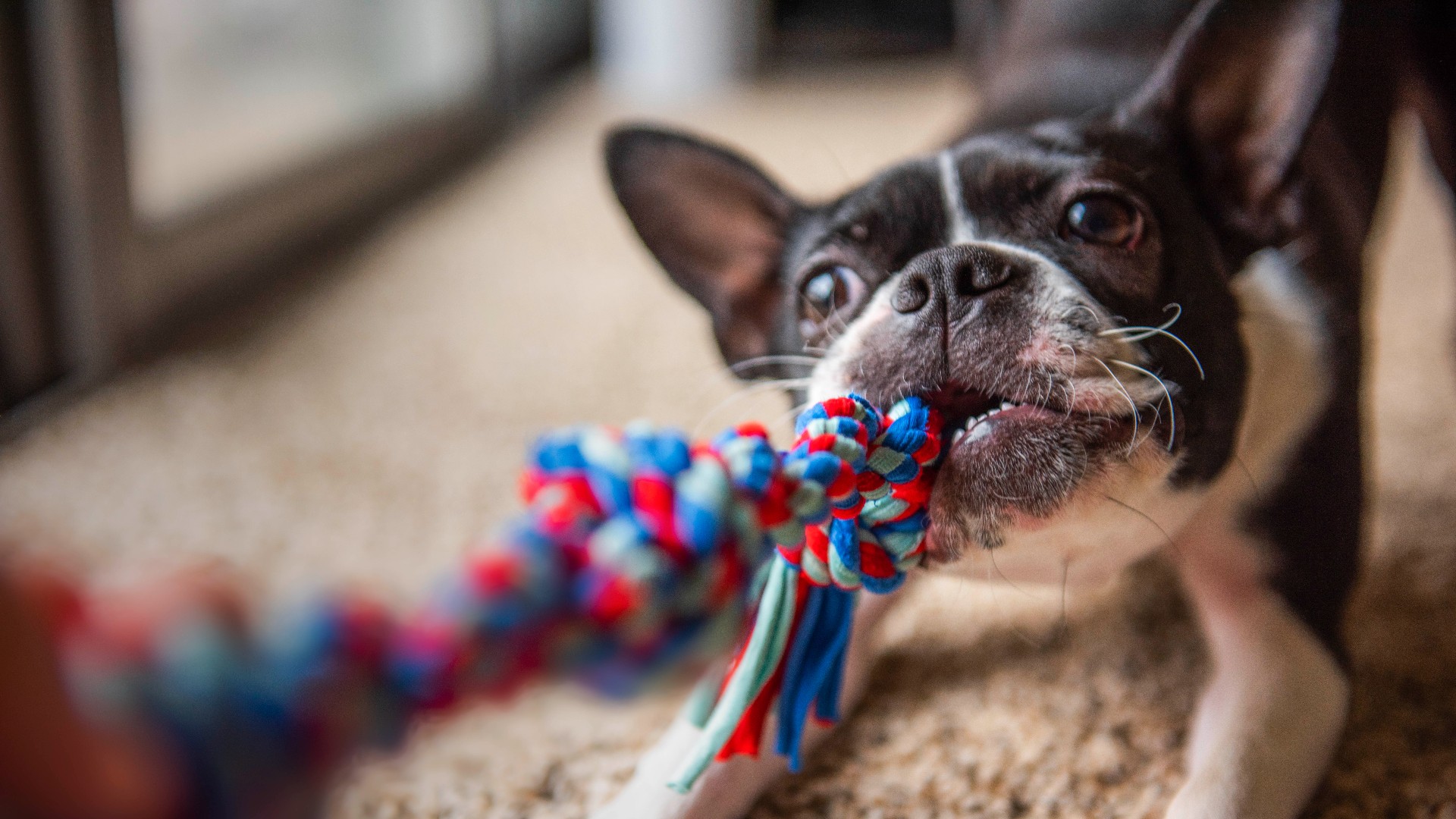4th of July dog safety: 10 ways to keep your pets calm this holiday
Sudden loud noises on Independence Day can be traumatic for dogs so check out these top coping strategies

The 4th of July is cause for celebration across the United States but this federal holiday can nevertheless be something of a nightmare for our canine companions. Although drone light shows are becoming an ever more popular alternative to fireworks, Independence Day still tends to be a noisy affair and, because dogs have sensitive hearing, it often triggers fear.
According to a study published in the Veterinary Nursing Journal, fireworks are the most common cause of noise aversion in dogs. Fear tends to be obvious, too, as shown in a large survey of dog and cat owners published in the New Zealand Veterinary Journal in which 46% of owners said they recognised the signs. As such, prevention and management of noise-related phobias is advised. Trouble is, many pet owners may not be entirely sure of the steps to take
Here we round up a selection of our favorite tips to help keep canines calm. As well as being applicable to fireworks, they will also help dogs cope with the various other loud noises they may encounter, whether that be raised voices from a neighbor's party, noisy vehicles, thunder and even gunfire. It's a good idea to understand the symptoms of anxiety in dogs too. That way you can help to bring your dog back to a state of relaxation.
1. Give your dog plenty of exercise during the day
Just like with us humans, exercise can be a great way to lower stress and anxiety levels in your dog, helping to release tension and put your furkid’s body in a more relaxed state.
If you want a calm doggy come nighttime, canine behaviorist Brad Bevill recommends tiring your dog out before the celebrations begin by getting in plenty of exercise.
“Drain the energy first, put them into a rest state if you want them to rest,” he explains. You can do this by taking them on a long run, hike, or walk, taking them to the beach and letting them burn off some energy in the sea, or stay close to home and use some of the best dog toys to play games of tug of war and fetch.
Looking a bit wet outdoors? Don’t worry, we’ve got you covered there too. These indoor games for dogs will keep your canine amused for hours and help tire them out so they’ll sleep better later.
2. Feed him a big meal
There’s nothing like a tummy full of dog food to make a canine feel content and if you make it rich in carbohydrates (think cooked rice or pasta) it has the added benefit of inducing sleep.
We recommend you prepare a bigger than usual meal and feed it to your furkid late in the afternoon because once the fireworks or other loud noises start, it’s likely they’ll feel too anxious to eat.
3. Create a safe haven for your dog
Set up a safe and cozy spot in your house for your hound to hang out in while all the celebrations are taking place. Investing in one of the best dog beds will help them feel comfortable and if you choose one with high walls or a dome shape, it has the added benefit of making them feel protected.
Depending on how stressed out your furkid tends to get, you might even want to consider putting them, along with their bed and blankets, inside a dog crate to keep them nice and secure. If you’re going to with this option, and your canine hasn’t been in a crate before, we recommend you spend some time learning how to crate train a dog to get them used to the experience.
4. Make use of natural products
There are lots of natural formulas on the market these days that have been proven to help calm pets, so if your dog is naturally anxious, it can be worth testing a few of them out.
We love the RelaxoPet Pro, which uses advanced vibration technology to help soothe stressed-out dogs, and the team over at Bach Flower has adapted their much-loved rescue remedy drops for humans to create a blend that works for pets too.
You need to be careful when using essential oils around dogs as many of them are toxic, but speak with your veterinarian about whether properly prepared and diluted lavender oil could be spritzed on your dog’s coat and bedding to help with relaxation.
5. Give your doggy a massage

For many of us, there’s nothing that quite calms the body and mind like a good massage, and the same can be true with dogs. Have your pooch lie down and gently massage his legs, back, neck, and around the ears. You’ll also find some calming points located on your dog’s head that you can use to give them some acupressure.
“Start at the top of your dog’s nose, where there’s an acupressure point associated with calming and healing," says Dr. Barrack, a New-York based vet and founder of Animal Acupuncture. “Using gentle pressure, run your thumb from the top of the nose and over the head, going back and forth slowly.”
You might also like to hold your dog if they’re showing signs of stress during loud noises, or stroke their body using long and slow motions of your hand. Studies have shown that petting your dog can lower both their heart rate and their blood pressure, reducing the flight or fight response within the body.
6. Play white noise
Dogs seem to suffer from over-stimulation in the same way that people do and it turns out that certain kinds of music calm the nervous system.
Breakthrough research has shown that special arrangements of classical music have a profound soothing impact on stressed-out dogs, which led veterinary neurologist Susan Wagner and her colleagues to create the album Through a Dog’s Ear.
You can also try other forms of white noise, such as leaving the TV or radio on or playing nature sounds, all of which are a great way of masking other noises that might distress your pet.
7. Desensitize your dog to loud sounds
For dogs that are prone to freaking out at the sound of fireworks, thunder, and loud vehicles, it’s well worth spending some time in the lead-up to the holidays getting them used to these sorts of sounds.
Start by identifying what your dog’s triggers are and then slowly expose them to low levels of those sounds by playing recordings of them. Monitor your dog and gradually increase the volume until they’re able to tolerate the noise.
You’ll definitely want to play the long game with this one as it’s not something you can do once and expect results with. Work with your dog over many sessions and if at any time they start to become stressed, anxious, or fearful, revert back to the last level of volume they were able to tolerate before slowly increasing again.
8. Make sure they have ID
While we have our fingers and toes crossed that your dog will stay put inside, there’s always a chance that they may be freaked out enough to try and escape. If that happens, you’ll be glad that you had them microchipped and their name etched into their collar.
Another great option is to fit your dog with one of the best pet trackers. These lightweight devices offer great peace of mind, helping you to quickly locate your pooch if they’ve run off and enabling you to follow their movements in real-time.
9. Distract your dog with treats and toys

Crack that toy box open because it might just save you from a long night of chaos! Distraction is often the best medicine when it comes to frightened furkids, so have a few of the best dog chew toys on hand that you can stuff or smother with something like peanut butter to keep your pooch entertained.
Stocking up on the dog treats is also well worth it as food is a great diversion and you can use it as a form of positive reinforcement for good behavior throughout the evening.
10. Talk to your vet
If you haven’t had time to do any prep work with your pet this year, don’t worry. For dogs that suffer from severe stress and anxiety, a trip to your vet before the holiday weekend could be well worth it.
While medication for anxiety is often a last resort, many vets will be happy to prescribe it as a one-off if you know that your pet is likely to get themselves worked up into a panic.
PetsRadar Newsletter
Get the best advice, tips and top tech for your beloved Pets

Kathryn is a freelance writer who has been a member of the PetsRadar family since it launched in 2020. Highly experienced in her field, she's driven by a desire to provide pet parents with accurate, timely, and informative content that enables them to provide their fur friends with everything they need to thrive. Kathryn works closely with vets and trainers to ensure all articles offer the most up-to-date information across a range of pet-related fields, from insights into health and behavior issues to tips on products and training. When she’s not busy crafting the perfect sentence for her features, buying guides and news pieces, she can be found hanging out with her family (which includes one super sassy cat), drinking copious amounts of Jasmine tea and reading all the books.
- David CrookesFreelance writer
